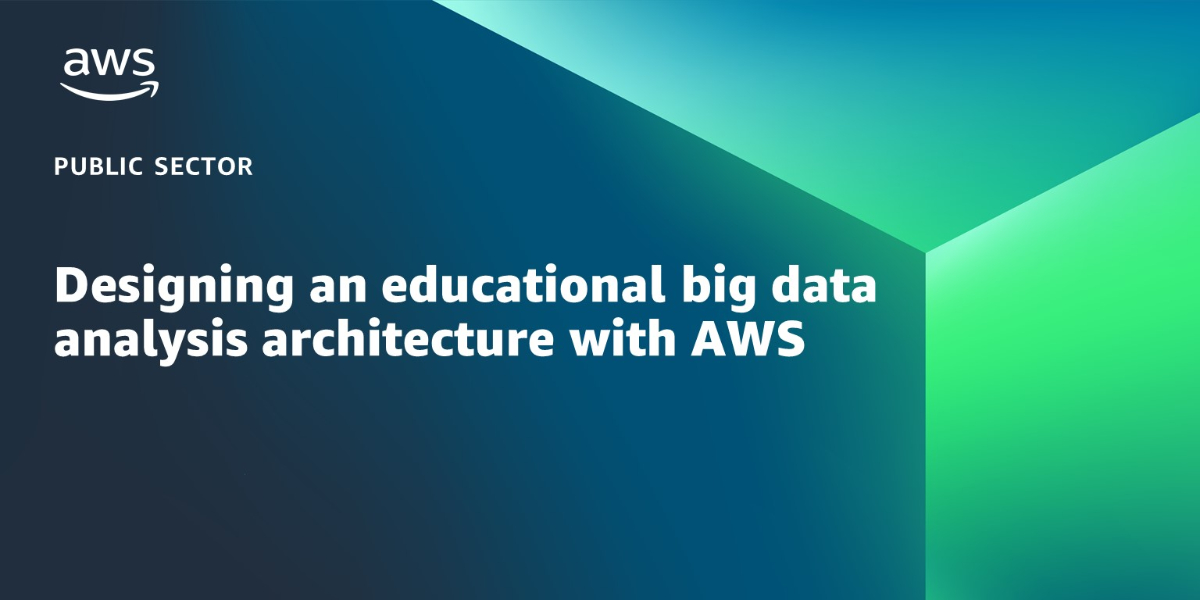AWS Public Sector Blog
Tag: architectural designs
Agility in the design and development of CBDCs: From discovery through launch
Many central banks globally are researching the possibility of launching a central bank digital currency (CBDC). AWS has worked with customers in the financial industry as they design secure, resilient, and scalable critical financial infrastructure networks. In this post, we share best practices for central banks to consider as they move through the CBDC development lifecycle.
Designing an educational big data analysis architecture with AWS
In this blog post, learn a high-level architecture, built on AWS, that uses a graph database to analyze unstructured and structured educational data that can, for example, help inform a recommendation to a student for the appropriate courses to take in their next semester based on multiple personalized data factors.
Now available: New AWS program supporting nonprofit donor and member engagement
As one-time donations increasingly become the norm, nonprofit development teams are challenged to think outside-the-box to attract, retain, and communicate with their valuable supporters. Nonprofit organizations can use data to inform an enhanced engagement strategy, but many are challenged to unlock the full value of that data affordably and at scale. To help nonprofits use the cloud to build innovative fundraising and member engagement solutions, we are launching a new program – AWS TechAction.
How to build an Aadhaar Data Vault on AWS
An Aadhaar number is a 12-digit unique identification number issued by the Unique Identification Authority of India (UIDAI) to every individual in India. Considering the sensitivity of the Aadhaar number and the potential implication of having one’s Aadhaar number compromised, UIDAI mandated the need for all Aadhaar and Aadhaar-related data to be encrypted and stored separately in a secure, access-controlled data repository known as an Aadhaar Data Vault. This blog post explains how government and private entities that collect, process, and store Aadhaar data for various use cases can use AWS CloudHSM from AWS to create an Aadhaar data storage solution that can meet guidelines provided by UIDAI.
Enhance the citizen experience with deep learning-powered suggestions
Citizens want to report issues to their local governments in a fast and simple manner and not have to worry about identifying the right government agency or phone number—for instance, if a fire hydrant is broken, or a road sign has fallen over. In this blog post, learn how to set up a solution with AWS deep learning services that creates a fluid experience for reporting and addressing these issues.
How government agencies can vet external data in minutes with data interchange zones
Learn how government agencies can use AWS to build data interchange zones to automate their ability to ingest and validate data from other agencies or external entities in a secure manner. Automating this process can help agencies save time to focus on more strategic aspects of their mission.
How to improve government customer experience by building a modern serverless web application in AWS GovCloud (US)
Modern applications built using microservices architectures improve customer experience by dramatically reducing the risk of failures in a web application. In this blog post, we present a sample AWS reference architecture of a microservices application built using an architecture framework based in AWS GovCloud (US), which can help support adherence to a Federal Risk and Authorization Management Program (FedRAMP) High Baseline.
Modernize Moodle LMS with AWS serverless containers
Moodle is a popular open source learning management system (LMS). Many education institutions are deploying and running Moodle on a physical hardware or virtual machine (VM) environment. They are looking to improve the scalability of their Moodle application to simplify operations and monitoring, and also optimize operating costs. One way to approach this is to use containers technology. In this blog post, learn how to deploy and run Moodle using serverless containers technology on AWS.
Virtualizing satellite communication operations with AWS
Virtualizing the satellite ground station with cloud technology can increase scalability, flexibility, and operational agility for satellite communications (satcom) operations. This blog post describes how AWS can help satcom customers virtualize their ground stations that are directly connected to satellite antenna systems. This post details the benefits of decoupling satellite ground station hardware and software components to improve scalability and flexibility. This post also presents a reference architecture to virtualize the satcom ground segment after the satellite signal is digitized at both ends of communication.
How to implement CNAP for federal and defense customers in AWS
In July 2021, the U.S. Department of Defense (DoD) released a cloud native access point (CNAP) reference design that follows zero trust architecture (ZTA) principles and provides a new approach to access mission owner (MO) applications. The DoD’s reference design discusses four core capabilities of CNAP: authenticated and authorized entities (C1), authorized ingress (C2), authorized egress (C3), and security monitoring and compliance enforcement (C4). In this blog post, we walk through how to establish the C2 component via a virtual internet access point (vIAP) with AWS. The proposed architectures can reduce operational cost and management overhead, while improving the accessibility, resiliency, and security of mission owner applications.









